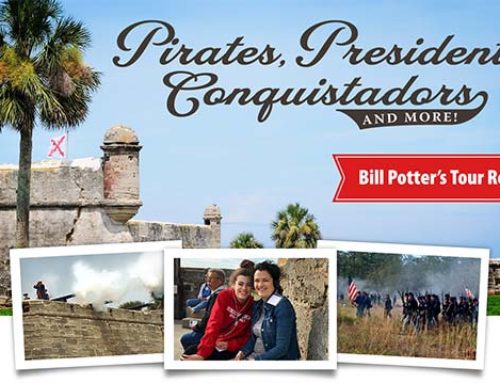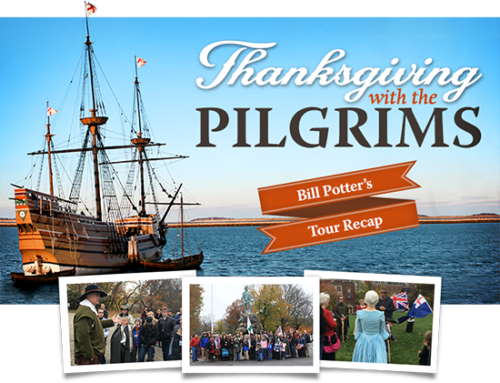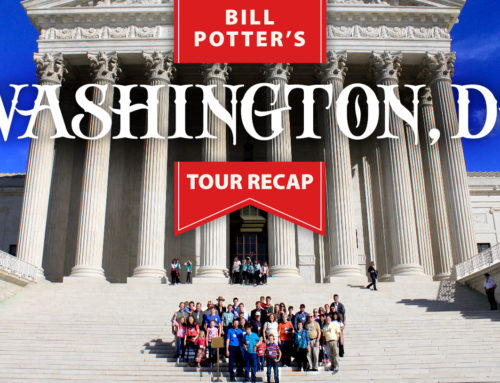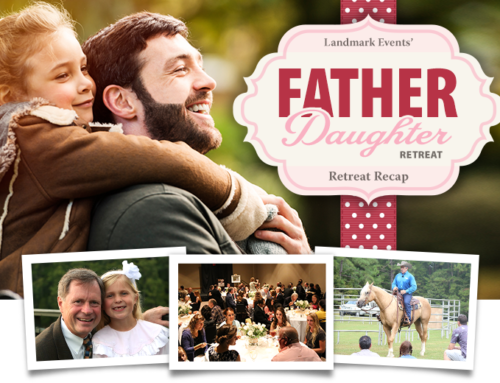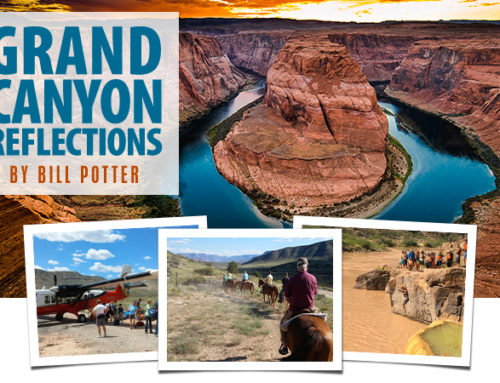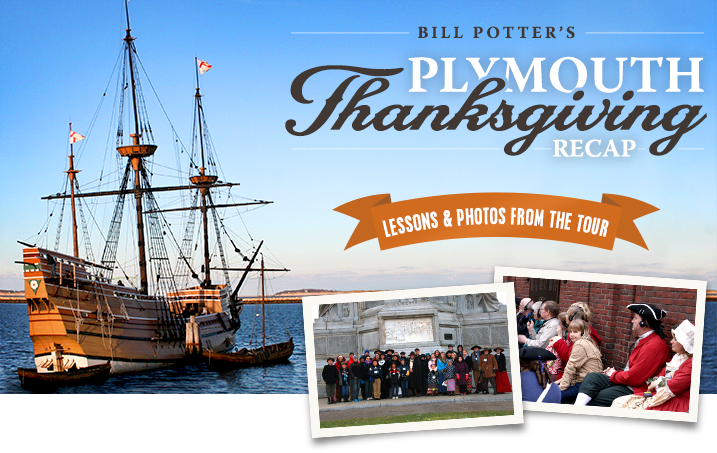
Thanksgiving with the Pilgrims Tour Recap
 andmark Events, with President Kevin Turley and historians Bill Potter and Dan Ford, provided a Thanksgiving tour that should be first in line of every American family’s history site bucket list: Plymouth, Massachusetts. One of the best features of a trip to Plymouth is the nearness to Boston, which enables us to cover important historic ground and teach about many people from the first families that sailed on the Mayflower, to the men who founded the nation. The great blessings of God’s providence in colonial America are so numerous in Boston and Plymouth that only the willfully blind could miss them.
andmark Events, with President Kevin Turley and historians Bill Potter and Dan Ford, provided a Thanksgiving tour that should be first in line of every American family’s history site bucket list: Plymouth, Massachusetts. One of the best features of a trip to Plymouth is the nearness to Boston, which enables us to cover important historic ground and teach about many people from the first families that sailed on the Mayflower, to the men who founded the nation. The great blessings of God’s providence in colonial America are so numerous in Boston and Plymouth that only the willfully blind could miss them.
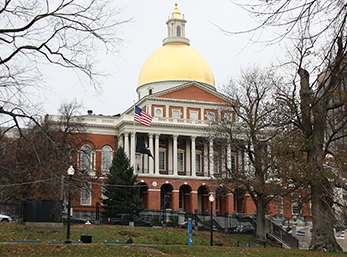
The Massachusetts State House, Boston
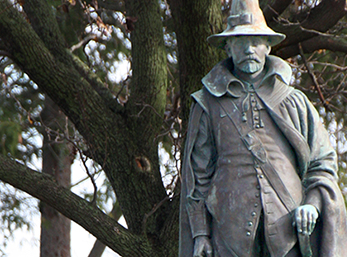
Monument to William Bradford, Plymouth
Plymouth
The Mayflower Pilgrims set foot on the New England shore in November of 1620 from a small battered ship, short of provisions and full of sickness. The people of the Leyden congregation were without their pastor but not without God, hope or perseverance. We were reminded of the hardships they faced when a nor’easter struck us in Plymouth. Cold, powerful winds howling through the town, and icy rain coming in parallel with the ground struck us. Unlike the Pilgrims shivering aboard ship or lying in the open, we had nice warm accommodations. We visited the Mayflower II, an accurate reconstruction of the original ship, and interpreted in costume by men and women who know their history. We saw the Plymouth Rock where they first set foot on the shoreline, and the sarcophagus that contains the bones of some of those who died that first winter. Half of them, in fact, succumbed to the weather, malnourishment and disease in their first four months and were buried surreptitiously in “Cole’s Hill”.
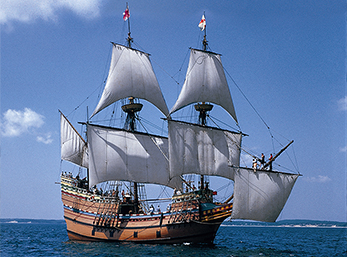
The Mayflower II
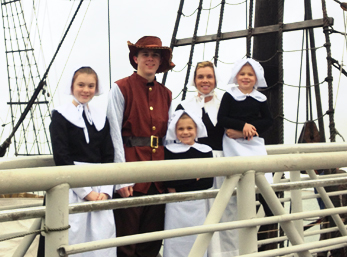
Aboard the Mayflower II
Our walking tour of Plymouth included stops at the monument to the women of the Mayflower, a most telling and powerful image of a Pilgrim woman, with Bible in hand and wearing a determined visage, and the manly statue of Chief Massasoit whose friendship providentially enabled the Pilgrims to survive and prosper. The peace treaty signed with the Wampanoag nation lasted for fifty years. We witnessed the grinding of wheat at the grist mill and were regaled with the story of the legendary Forefather’s Monument by Plymouth’s top guide, Leo Martin of the Jenney Museum and the Plymouth Rock Foundation.
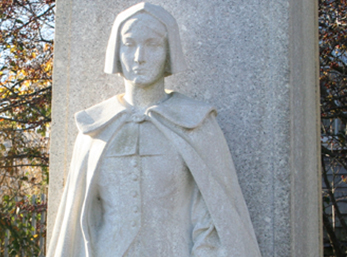
Monument Honoring Our Pilgrim Mothers
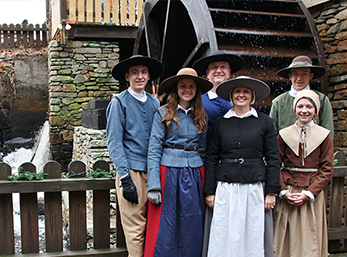
Outside Jenney Grist Mill
Every year at Thanksgiving, a determined group of costumed interpreters, led by the Jehle brothers, march through the town to the beat of the drum, and hold a brief service in the cemetery, located on the hill where the first fort was built. Their message gives glory to God for His saving Grace and His divine protection, enabling them to survive. After joining in the Pilgrim procession, we gathered at the foot of the hill and talked about the first church there and how apostasy has made inroads over the years. Perhaps the crowning event of Plymouth was the Thanksgiving dinner where Dan Ford spoke of the legacy of Thanksgivings through our nation’s history, fathers recited rich scriptures and children rose to give testimony to God’s provision. The following day we enjoyed a second feast at Plimoth Plantation, with speeches and performances by Pilgrims and Indians alike.
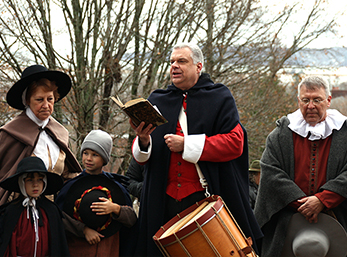
Monument Honoring Our Pilgrim Mothers
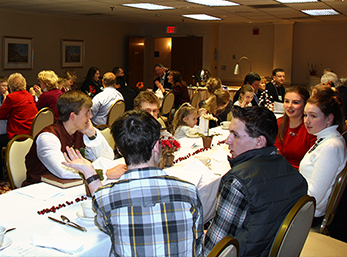
Gathering for a Thanksgiving Feast
Boston
Our Boston tour encompassed the key stops along the Freedom Trail, including the Granary and King’s Chapel cemeteries where we told the stories of some of the men buried there, including Declaration of Independence signers John Hancock, Samuel Adams and Robert Treat Payne, as well as characters of renown like Paul Revere and James Otis. We related the story of John Winthrop, one of the most important men in American history, who told the story of the great Puritan migration of the 1640s and led the Massachusetts colony through its planting, seeking to establish “a city on a hill” for the flourishing of Christian civilization in a biblical commonwealth.
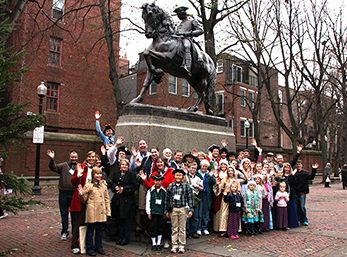
The Paul Revere Statue on Freedom Trail
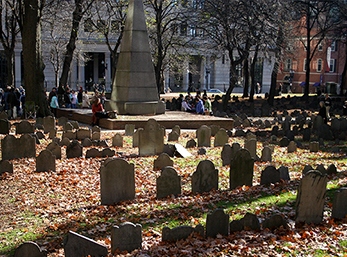
Boston’s Granary Cemetery
Throughout our tour we noticed the antithesis between the biblical law-goals of the founders and the rebels seeking to overturn the application of a biblical worldview in following centuries. At the Old South Meeting House we saw the contrast between George Whitefield, the Puritans, George Washington etc. and the modern secular humanist heroes like Planned Parenthood founder Margaret Sanger and Socialist Party candidate W.E.B. DuBois.
We spent an entire day tramping the battlefields of Lexington, Concord and Bunker Hill (actually Breed’s Hill). We told the story of the Minute Men who stood their ground on the green and witnessed the “shot heard round the world”. The young people charged over the bridge at Concord to suppress and drive away a British flag-carrying, slow afoot, red-sweatered invader. We ourselves were driven from Breed’s Hill by a freezing howling rain storm that made everyone appreciate the comfortable bus ride back to Plymouth.
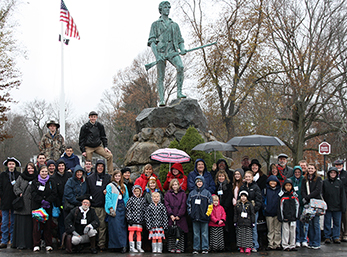
Minute Man Monument at Lexington Green
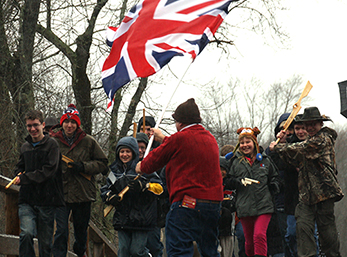
The British Are Driven Across Concord Bridge
Our travels and monuments also brought out talks on the causes of the War for Independence, the War of 1812, heroes, Quaker-ladies, and the importance of the village green. We looked at the role of the church in New England, especially at the gravesite of three generations of the singular Mather family, whom John Adams called the real founding fathers. Included in every stop, every lecture, and on the bus talks, were the documents and books of the period, professionally collected and explained by Dan Ford. We handled an original copy of the sort of Geneva Bible brought by the Pilgrims. We held in our hands the news items from England and America that are part of the legacy of the founders of the 1770s. The artifacts that are brought on the tour are priceless and important in our national history and Mr. Ford’s insights and teaching make the trip utterly unique.
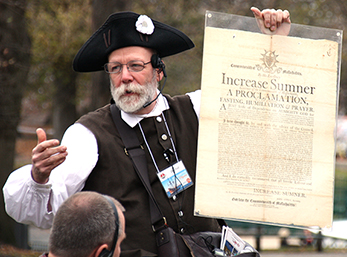
Dan Ford Discusses a Period Document
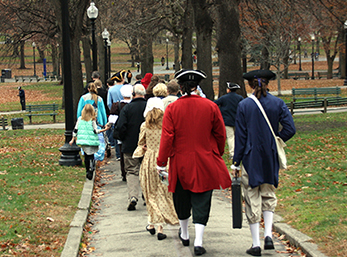
Patriot Attendees in the Boston Common
One special evening of the tour was spent in warm fellowship and teaching by Bill Potter and Dan Ford at the Leyden Street house that sits on the site of the first building of the Pilgrims. The current structure was built in 1797 and was graciously provided by The Leyden Preservation Group for our enjoyment. The fellowship of like-minded families from across the country is often the highlight of a tour, and this year was no exception. Friendships were forged that will last a lifetime.
Conclusion
The Pilgrims and Puritans were seeking a place for succeeding generations to raise godly families, prepared to take dominion over the earth, to spread the Gospel of Christ without apology, and establish Christian civilization for the world to emulate. The inheritors of that vision, though not perfectly, created a Constitutional Republic based on those ideas, which proved to be a beacon followed by millions from around the earth. Those principles are all but forgotten, lost or destroyed by the forces motivated by a very different vision of the past and future. If we can’t tell the difference, or are not willing to stand for right in our own times, the bones of the fathers will go into their sarcophagus of history to await those in a more faithful future.


